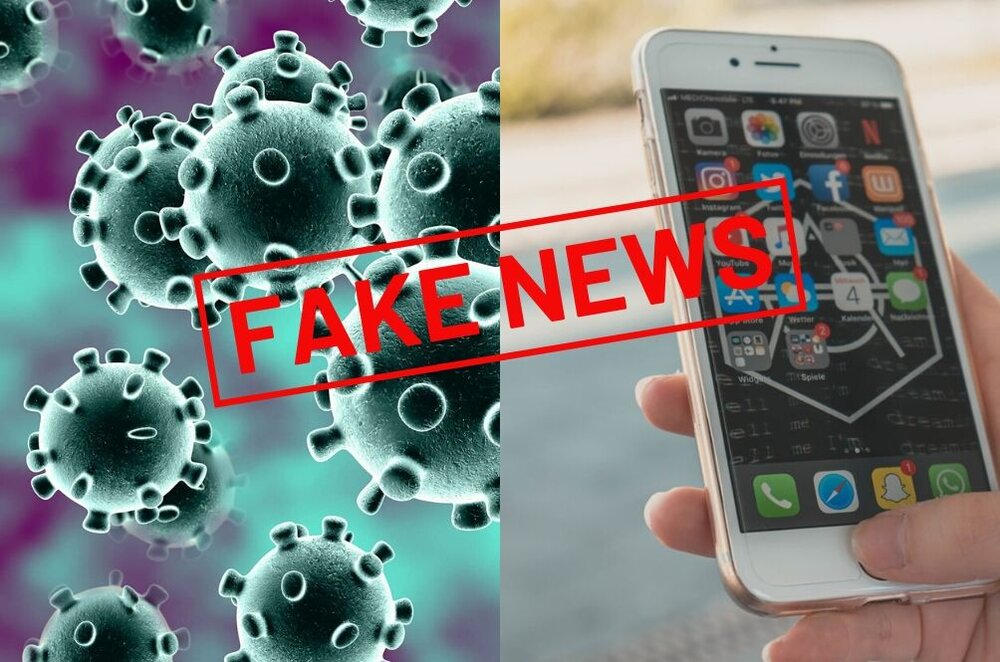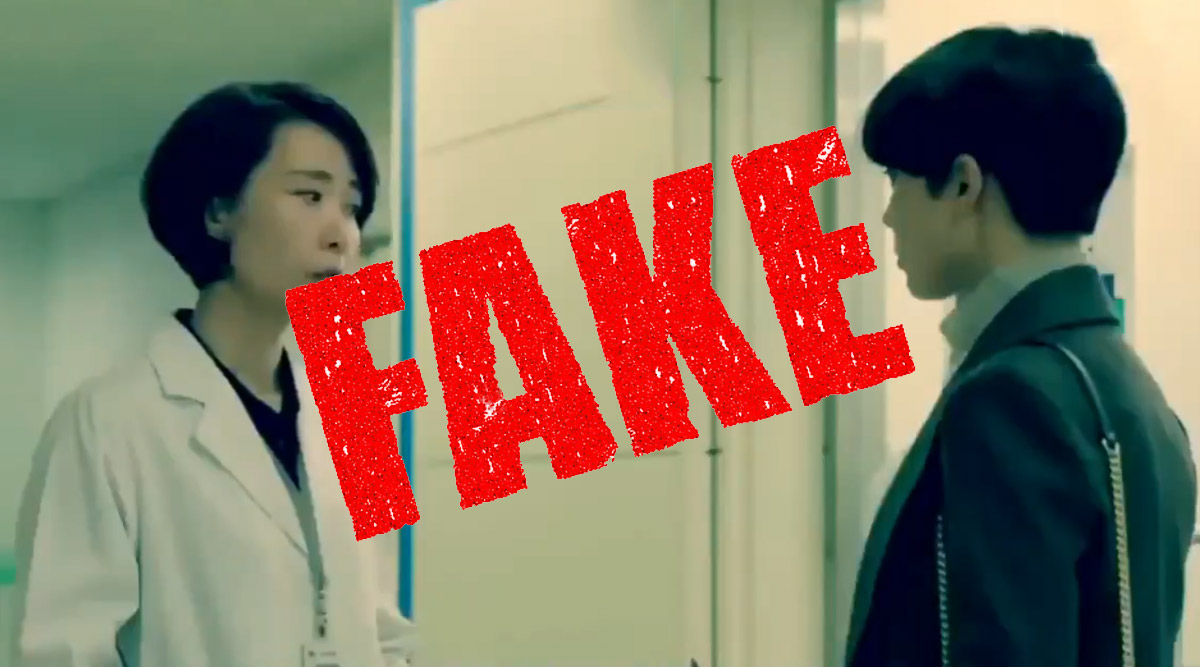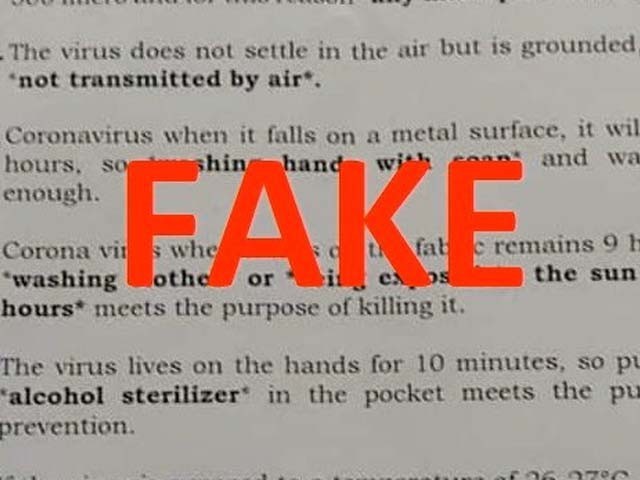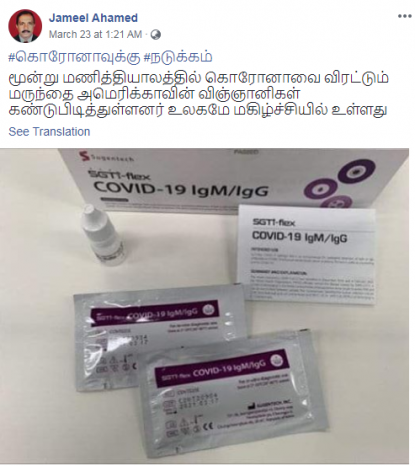آخرین مطالب
امکانات وب
After the initial outbreak of coronavirus disease 2019 (COVID-19), conspiracy theories, misinformation, and disinformation emerged online regarding the origin, scale, prevention, treatment, and various other aspects of the disease.
The facts: The graphics and the tips are not from Unicef.
This photo shows a COVID-19 test kit developed by a South Korean The post’s Tamil-language caption translates to English as: “American scientists have discovered the medicine which drives away coronavirus in three hours. The whole world is happy.” An image has been shared thousands of times in multiple posts on Facebook alongside a claim that it shows a medicine created by US scientists that can cure the novel coronavirus, COVID-19. The claim is false; the photo in fact shows a COVID-19 test kit developed by a South Korean company; as of March 2020, international health experts have said there is no "cure" or vaccine for COVID-19. Here, we will dissect some of the most common myths that are currently circulating on social media and beyond. eResearch by Navid Ajamin -- spring 2020 1. Spraying chlorine or alcohol on skin kills viruses in the body Applying alcohol or chlorine to the body can cause harm, especially if it enters the eyes or mouth. Although people can use these chemicals to disinfect surfaces, they should not use them on skin. These products cannot kill viruses within the body. 2. Only older adults and young people are at risk 3. Children cannot catch COVID-19 4. COVID-19 is just like the flu However, the overall profile of COVID-19 is more serious. Estimates vary, but its mortality rate seems to be between about 1% and 3%. Although scientists are working out the exact mortality rate, it is likely to be many times higher than that of seasonal flu. 5. Everyone with COVID-19 dies In a recent report, the Chinese Center for Disease Control and Prevention concluded that 80.9% of COVID-19 cases were mild. The WHO also report that around 80% of people will experience a relatively mild form of the disease, which will not require specialist treatment in a hospital. Mild symptoms may include fever, cough, sore throat, tiredness, and shortness of breath. 6. Cats and dogs spread coronavirus Scientists are debating the importance of this case to the epidemic. For instance, Prof. Jonathan Ball, Professor of Molecular Virology at the University of Nottingham in the United Kingdom, says: “We have to differentiate between real infection and just detecting the presence of the virus. I still think it’s questionable how relevant it is to the human outbreak, as most of the global outbreak has been driven by human-to-human transmission.” He continues: “We need to find out more, but we don’t need to panic — I doubt it could spread to another dog or a human because of the low levels of the virus. The real driver of the outbreak is humans.” 7. Face masks protect against coronavirus As these masks do not fit neatly against the face, droplets can still enter the mouth and nose. Also, tiny viral particles can penetrate directly through the material. However, if someone has a respiratory illness, wearing a mask can help protect others from becoming infected. “There is very little evidence that wearing such masks protects the wearer from infection,” Dr. Ben Killingley, Consultant in Acute Medicine and Infectious Diseases at University College London Hospital in the U.K., explains. “Furthermore, wearing masks can give a false sense of reassurance and might lead to other infection control practices being ignored, e.g., hand hygiene.” The WHO recommend that people who are caring for someone with suspected COVID-19 should wear a mask. In these cases, wearing a mask is only effective if the individual regularly washes their hands with alcohol-based hand rub or soap and water. Also, when using a mask, it is important to use it and dispose of it properly. 8. Hand dryers kill coronavirus 9. SARS-CoV-2 is just a mutated form of the common cold Both Middle East respiratory syndrome (MERS) and severe acute respiratory syndrome (SARS) began in animals and passed into humans. 10. You have to be with someone for 10 minutes to catch the virus 11. Rinsing the nose with saline protects against coronavirus 12. You can protect yourself by gargling bleach 13. Antibiotics kill coronavirus 14. Thermal scanners can diagnose coronavirus In addition, symptoms of COVID-19 can appear 2–10 days after infection, which means that someone infected with the virus could have a normal temperature for a few days before a fever begins. 15. Garlic protects against coronaviruses 16. Parcels from China can spread coronavirus The CDC explain that “because of poor survivability of these coronaviruses on surfaces, there is likely very low risk of spread from products or packaging that are shipped over a period of days or weeks at ambient temperatures.” 17. Home remedies can cure and protect against COVID-19 The best approach is to adopt a good handwashing regimen and to avoid places where there may be unwell people. 18. You can catch coronavirus from eating Chinese food in the U.S. 19. You can catch coronavirus from urine and feces “It isn’t a very pleasant thought, but every time you swallow, you swallow mucus from your upper respiratory tract. In fact, this is an important defensive mechanism. This sweeps viruses and bacteria down into our gut where they are denatured in the acid conditions of our stomachs.” “With modern, very highly sensitive detection mechanisms, we can detect these viruses in feces. Usually, viruses we can detect in this way are not infectious to others, as they have been destroyed by our guts.” However, it is worth noting that some research concludes that viruses, which are similar to SARS-CoV-2, might persist in feces. A recent research letter in JAMA also concludes that SARS-CoV-2 is present in feces. 20. The virus will die off when temperatures rise in the spring 21. Coronavirus is the deadliest virus known to man 22. Flu and pneumonia vaccines protect against COVID-19 23. The virus originated in a laboratory in China 24. The outbreak began because people ate bat soup What should we do? The Centers for Disease Control and Prevention (CDC) recommend these simple measures to reduce the spread of SARS-CoV-2:
Unless you are a health worker or are caring for someone who is sick, the CDC do not recommend wearing face masks. The tips above might seem simplistic, but during an epidemic, these are the best ways to make a difference. Reference:
See also: Misinformation related to the 2019–20 coronavirus pandemic |
برچسب : نویسنده : healthy4you بازدید : 158







